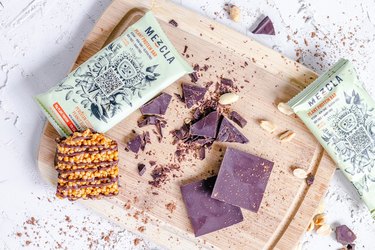Many diseases, like diabetes, heart disease, and obesity, are linked to sugar. However, the average American eats more than 150 pounds of this sneaky substance every year. Luckily, there are plenty of delicious foods without sugar, from steak and veggies to crunchy nuts.
Beef is a staple food for many people Its rich, meaty flavor makes it a tasty addition to burgers, stews, and other dishes. But when scanning nutrition labels, some people notice small amounts of sugars listed This leads to the question – does beef contain sugar?
The short answer is that while beef does not naturally contain sugar small quantities can make their way into certain beef products during processing. Let’s take a closer look at where these sugars come from and how to avoid them.
Does Raw Beef Contain Sugar?
In its raw, unprocessed form, beef does not naturally contain sugars The primary nutrients found in raw beef are
-
Protein: Twenty to twenty-six grams of protein are in every three ounces of beef. Protein helps build and repair tissues and muscles.
-
Fat – The fat content varies based on the cut of beef. Cuts with more fat, like ribeye, have more saturated fat than cuts with less fat, like eye of round. Fat provides calories and nutrients like vitamins A, D, E, and K.
-
Iron – A 3 ounce serving of beef contains up to 3 mg of iron, an important mineral that aids in oxygen transport in the blood. People who are anemic may need more iron.
-
B Vitamins – Beef provides B12, niacin, B6, and other B vitamins. These support energy metabolism and brain health.
-
Zinc – Important for immune function and DNA formation.
-
Selenium – An antioxidant mineral that protects cells from damage.
So while raw beef is packed with nutrition, sugars are not present before processing.
Where Does Sugar in Beef Come From?
While raw beef contains no sugars, small amounts can make their way into beef products during manufacturing and processing:
-
Added Sugars – Sugar may be added as an ingredient to flavor and tenderize processed beef products like jerky or smoked meats. Barbecue sauces and glazes added to these products also boost sugar content.
-
Marinades and Sauces – Pre-marinated and sauced beef often has added sugars to balance flavors. Teriyaki or honey garlic marinades can increase sugars.
-
Curing – Cured beef like corned beef or pastrami traditionally uses curing salts containing sugars. This adds minimal sugars.
-
Mechanical Tenderizing – Needle tenderizing devices inject beef with a solution containing sugars to break down proteins.
-
Enhanced Beef – “Enhanced” beef is injected with a salty phosphate solution to boost juiciness. The solution may have sugars too.
For fresh cuts of beef without special flavoring or processing, sugar content remains at 0 grams. It’s the additional ingredients and manufacturing steps that introduce extra sugars.
How Much Sugar is in Beef?
The amount of sugar in beef can range widely depending on the specific cut and how it was processed:
-
A 3 ounce serving of raw ground beef contains 0 grams of sugar.
-
An equal portion of store-bought beef jerky can have up to 8 grams of sugar from added flavorings.
-
A frozen pre-made hamburger patty may have around 1 gram of sugars.
-
Beef franks and hot dogs average 1-2 grams of sugar per link.
-
Pre-marinated products like stir-fry strips or fajita meat can have 2-4 grams of added sugars per serving.
-
A serving of corned beef or pastrami has less than 1 gram of sugar.
As you can see, fresh basic cuts of beef are sugar-free while processed versions may contain additional sweeteners and flavor enhancers.
Why is Sugar Added to Some Beef Products?
Food manufacturers add sugars to certain beef items for several reasons:
Flavor – Sugar enhances and balances flavor profiles. It improves palatability, counters saltiness, and rounds out spicy or acidic notes.
Browning – Sugars speed up the Maillard reaction responsible for browning and forming the rich, caramelized flavors.
Tenderizing – Sugar breaks down tough proteins through denaturation, making beef more tender.
Moisture – Sugars retain moisture, leading to juicier meats after cooking.
Color preservation – Compounds in sugars keep meats looking redder longer. Nitrites often used for curing also contribute to this effect.
Fermentation – Sugars feed beneficial bacteria during the fermentation process for cured meats.
These functional benefits lead processors to include sugars in marinades, cures, sauces and injections. However, some people wish to limit added sugars for health reasons.
Is Sugar in Beef Bad for You?
Small amounts of sugar in beef are not harmful for most people. However, there are a few reasons you may want to minimize added sugars:
-
Tooth decay – Bacteria feed on sugars and produce acid that erodes enamel.
-
Weight gain – Sugary foods are high in calories and lead to overeating.
-
Diabetes risk – Frequent sugar spikes after meals can increase risk for insulin resistance over time.
-
Inflammation – Sugary diets promote inflammation, which is tied to numerous chronic diseases.
-
Cancer concerns – Some research links heavy sugar intake with increased cancer risk. But more evidence is needed.
The American Heart Association recommends limiting added sugar to no more than 6 teaspoons (25 grams) per day for women and 9 teaspoons (36 grams) for men.
Because meats only contribute minimal sugars at most, you don’t need to avoid beef completely. But selecting fresh, unprocessed cuts helps control your overall sugar consumption.
Tips for Choosing Low-Sugar Beef
If you want to keep sugars to a minimum, here are some tips when selecting beef:
-
Stick to basic raw cuts like steak, roasts, and ground beef. Avoid pre-seasoned and pre-marinated products.
-
Check labels and avoid beef items with sugars, honey, corn syrup, dextrose, or other sweeteners in the first 5 ingredients.
-
Opt for plain whole muscle jerky seasoned with just salt an

Best Foods Without Sugar
Whether youre trying to get leaner or eat better overall, you can choose from hundreds of foods without sugar. Vegetables, meat, fish, dairy, eggs, nuts and seeds are all healthy choices. Unprocessed meats, fish and seafood contain no sugar or carbs. Another good choice is avocado, which has only 0.4 grams of sugar per serving (one-third of a medium avocado).
Salmon sugar content, for example, is zero. Not to mention that youll get more than 21 grams of protein and just 155 calories per serving (3 ounces). The same goes for steak — one serving (3 ounces) has slightly more than 200 calories, over 24 grams of quality protein, 14 grams of fat and no carbs or sugars.
When it comes to the sugar in cheese and other dairy foods, things get a little bit tricky. Milk and its derivatives, including cheese, contain lactose, a natural sugar. Food manufacturers may also add this ingredient to cereals, lunch meat, bread and other canned or boxed products.
Whole milk, for example, provides 11 grams of sugars per cup. The same amount of fat-free skim milk contains 12.4 grams of sugars. Low-fat cottage cheese boasts 3 grams of sugar per serving (4 ounces). Other types of cheese, such as Camembert, Brie, Gruyere and soft goat cheese are sugar-free.
Leafy green vegetables are low in carbs and contain little or no sugar. Cooked spinach has less than 1 gram of sugar per serving (one cup). The same amount of cooked kale offers 1.6 grams of sugar, while iceberg lettuce has just 1.4 grams of sugar per cup.
Choose Healthy Zero-Sugar Foods
Video of the Day
Health organizations recommend limiting sugary foods, for good reason. This popular food ingredient affects your heart, brain, liver and hormones. A study in the August 2018 issue of Annual Reviews in Nutrition says that it has been shown to raise the risk of cancer by 60 to 95% in clinical trials.
Video of the Day
High-sugar diets may affect mental health, too. A large-scale study featured in Scientific Reports in July 2017 linked sugar consumption to common mental disorders, such as depression. These findings were attributed to its addictive effects. Sugar also triggers inflammation and affects blood glucose levels, which may further contribute to mood disorders.



The problem is that most foods contain sugar. From cookies and ice cream to pizza, sauces, canned soups and deli meats, this ingredient is found in thousands of products. Spotting it on food labels can be a challenge as its often listed under other names, such as:
- Sucrose
- Maltose
- Dextrose
- Fructose
- Glucose
- Corn sugar
- Cane sugar
- Agave sugar
- Maple syrup
- Treacle
- Blackstrap molasses
- Fruit juice concentrate
A single tablespoon of blackstrap molasses contains 10 grams of sugar. There are more than 12 grams of pure sugar in the same amount of maple syrup. The only way to figure out whether or not your favorite foods contain this ingredient is to check the labels.



How To Control Glucose If You Hate or Don’t Eat Meat!
FAQ
Does beef have a lot of sugar?
Does red meat have sugar in it?
Is beef ok for diabetics?
Does meat raise your blood sugar?
Does beef have fat?
Beef contains varying amounts of fat — also called beef tallow. Apart from adding flavor, fat increases the calorie content of meat considerably. The amount of fat in beef depends on the level of trimming and the animal’s age, breed, gender, and feed. Processed meat products, such as sausages and salami, tend to be high in fat.
Is beef a meat?
Beef is the meat of cattle ( Bos taurus ). It is categorized as red meat — a term used for the meat of mammals, which contains higher amounts of iron than chicken or fish. Usually eaten as roasts, ribs, or steaks, beef is also commonly ground or minced. Patties of ground beef are often used in hamburgers.
Is beef a fat or protein?
Beef is primarily composed of protein and varying amounts of fat. Here are the nutrition facts for a 3.5-ounce (100-gram) serving of broiled, ground beef with 10% fat content ( 2 ): Meat — such as beef — is mainly composed of protein. The protein content of lean, cooked beef is about 26–27% ( 2 ).
Does red meat hurt blood sugars?
Beef contains both protein and fat, but no carbohydrates. Where then does the misconception that red meat hurts blood sugars come from? Red meat is typically high in fats, especially saturated fatty acids. Foods containing fat are higher in calories which may lead to poor weight control if eaten in excess.
